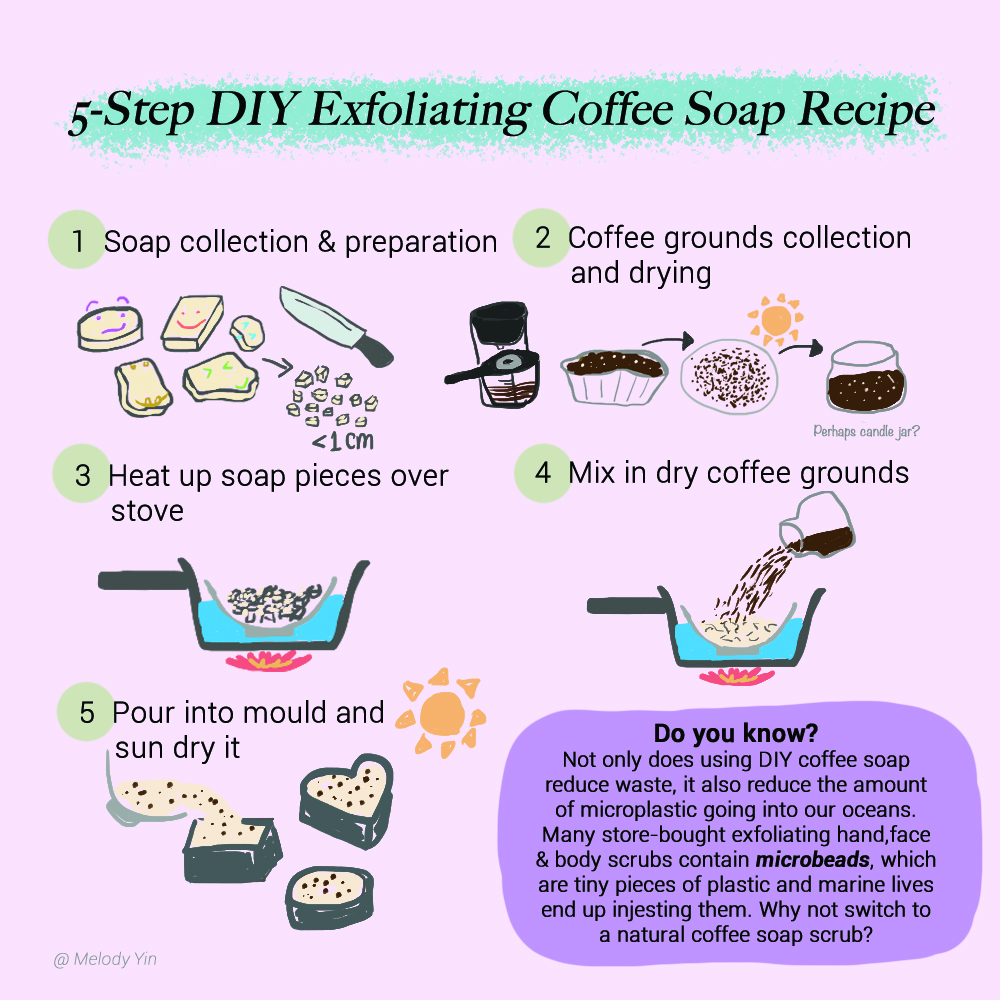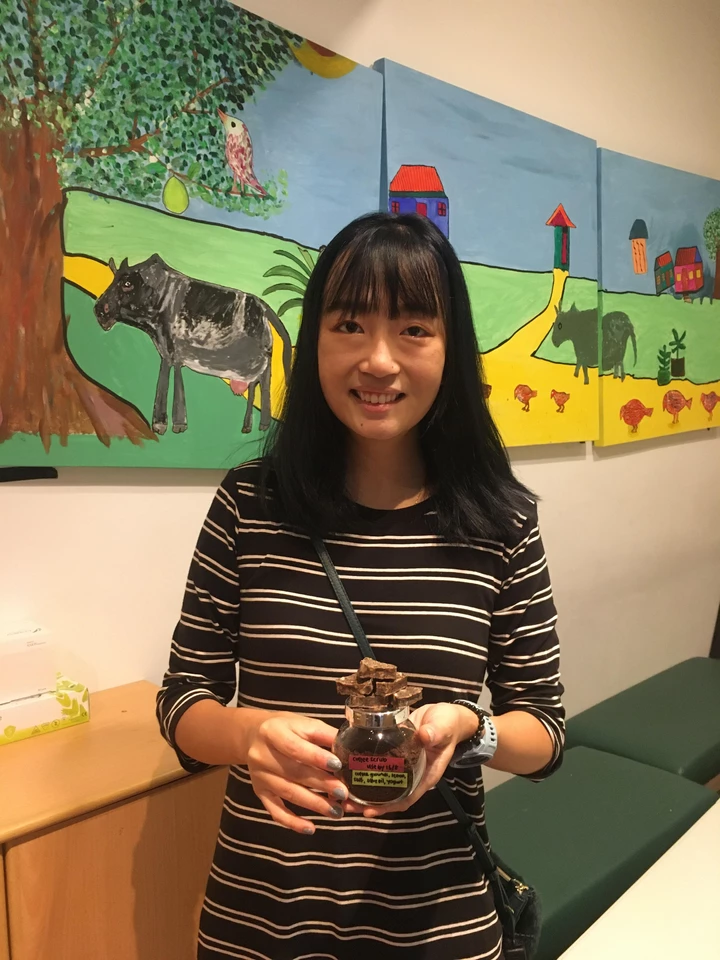I have been a nature and animal lover since young. But my interest in sustainability and conservation stemmed from my interaction with the sea years later when I started scuba diving.
The natural next step for me was to get involved in the local sustainability scene by educating myself and learning about the work local conservation and zero-waste organisations are doing; as well as being a small change advocate and sharing with people around me that small actions that individuals choose to do to conserve Earth’s resources can collectively make a huge difference.
During the peak of the pandemic earlier this year, I returned to Singapore from the US where I was studying Global Sustainability. While I was searching for a meaningful project over the summer break, Soap Cycling Singapore’s sharing event hosted by Hive.sg caught my eyes! Its proposed solution of upcycling soap waste from hotels, scraping and repackaging soaps and donating them to the needy are very much aligned with several sustainable development goals. At the same time, through involving corporates and the public in volunteerism, the message of zero waste and upcycling are further spread across the local community.
Comparing traditional soap and bottled liquid soaps, I am almost always in favour of traditional soap for its minimal packaging and low life cycle cost to the environment. Oftentimes, plastic bottles that contain liquid soap don’t get recycled as it is tedious to wash thoroughly; reusing the bottles is one way to reduce waste and length the product life cycle, however, not all brands of liquid soap come in refillable package (and refillable ones do come in plastic bags too).
After listening to the event, I’ve learnt that the team is embracing zero-waste mentality, using minimal and recycled packaging materials before upcycled soaps get donated and they involve foreign worker communities in their distribution and outreach.
With just barely two years since the Singapore chapter was set up, they’ve prevented over 2,000 kg of soaps going to incineration plant and redistributed clean and upcycled soaps to approximately 14,000 people in 10 countries! I found my short volunteering session at Soap Cycling’s volunteer center really fun and meaningful. Not only did I have the hands-on experience of scraping and recrafting soap pieces meant for the underprivileged, I also got the chance to chat with the passionate interns working on projects for the organisation.
If you have some time to spare, or if your company is looking for a meaningful corporate social responsibility (CSR) event, do reach out to Soap Cycling S’pore for a day of learning and hands-on fun. ~ Melody Yin
Melody’s exfoliating coffee soap recipe
I am a big coffee drinker and I used to throw away so much used coffee grounds every day. If you don’t already know, disposed coffee grounds release methane, a greenhouse gas that is 20 times more harmful than carbon dioxide. In experimenting with upcycling coffee, I have crafted a special five-step recipe for creating your own exfoliating coffee soap. This is one of the many fun ways to reuse coffee grounds and keep them away from landfills or incineration plants. ~ Melody Yin

5-Step DIY exfoliating coffee soap recipe
Step 1: Soap collection & preparation
-
Find and collect small pieces of soaps lying around the house. Hotel soaps that your family brings back from their trips or staycations are also okay.
-
When you have enough coffee ground, cut up 2-3 pieces of hotel-sized soaps (I encourage the use of small pieces of old soap bars too) into small slices or cubes of <1cm.
Step 2: Coffee grounds collection and drying
-
If you are an avid coffee drinker like me, whether you use a French press, an espresso machine, or a filter, you would have access to coffee grounds that you would throw away each morning. Save 1 to 2 days’ worth of used coffee grounds. Lay them out on a plate and sun them dry to prevent mould accumulation. Pour the dry coffee grounds into an empty container for storage.
Step 3: Heat up soap pieces over the stove
-
Pour water into a small pot. Place all the soap bits into a ceramic bowl and place the bowl over the water in the pot. Place the pot on a stove and turn on the heat to slowly melt the soap pieces. Stir to smoothen out the texture. You may put in a teaspoon of water.
Step 4: Mix in dry coffee grounds
-
Add dry coffee grounds into the bowl and mix well. Turn off the heat.
Step 5: Pour into mould and sundry it
-
Find a suitable mould from the stuff you already have at home. It could be an apple slicer / cake mould / small plastic or silicon container. Brush the mould with a little bit of oil, before you pour the soap into it. Sundry for 2 – 3 days.
Voila, and you have your own exfoliating soap!

